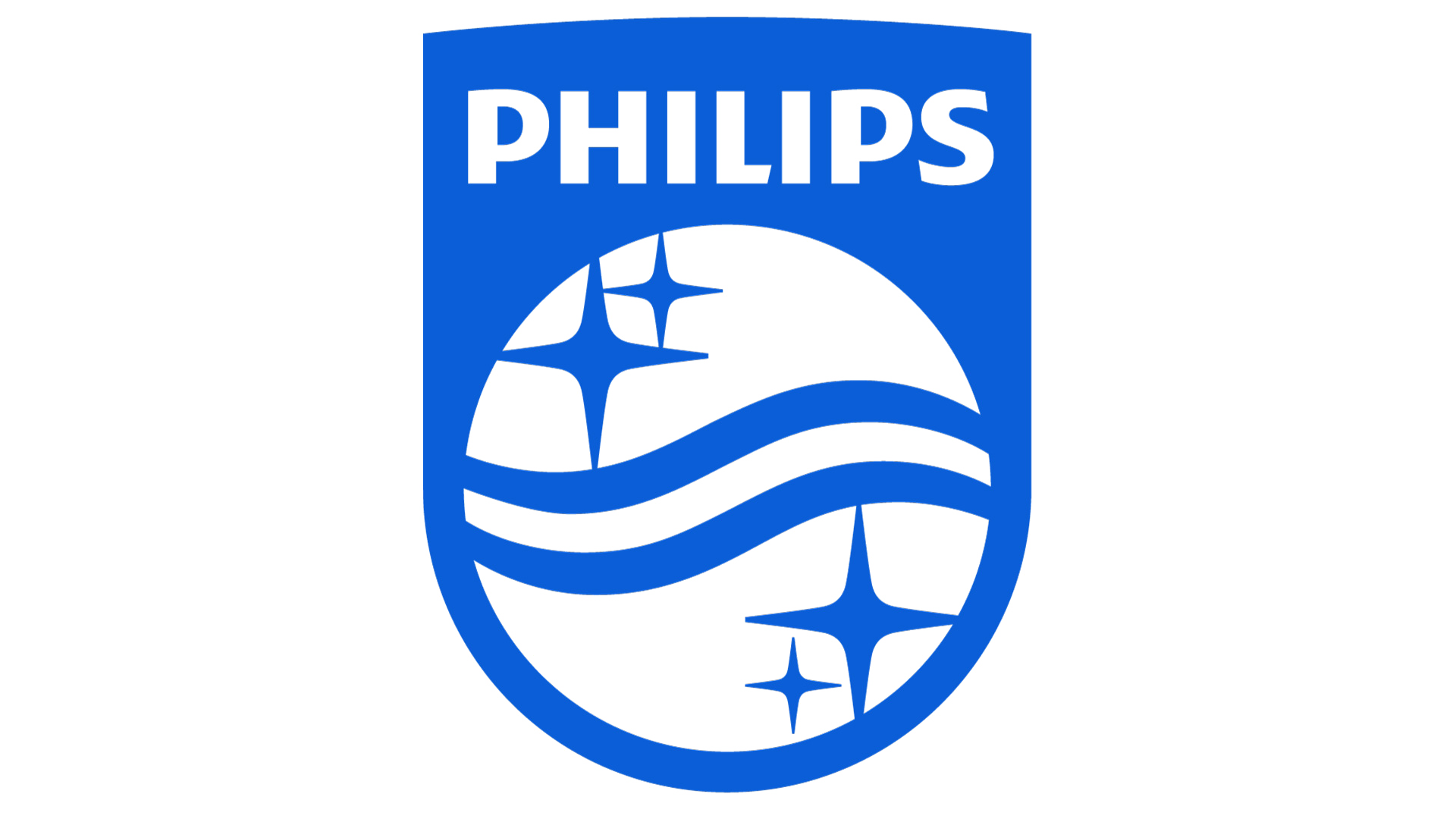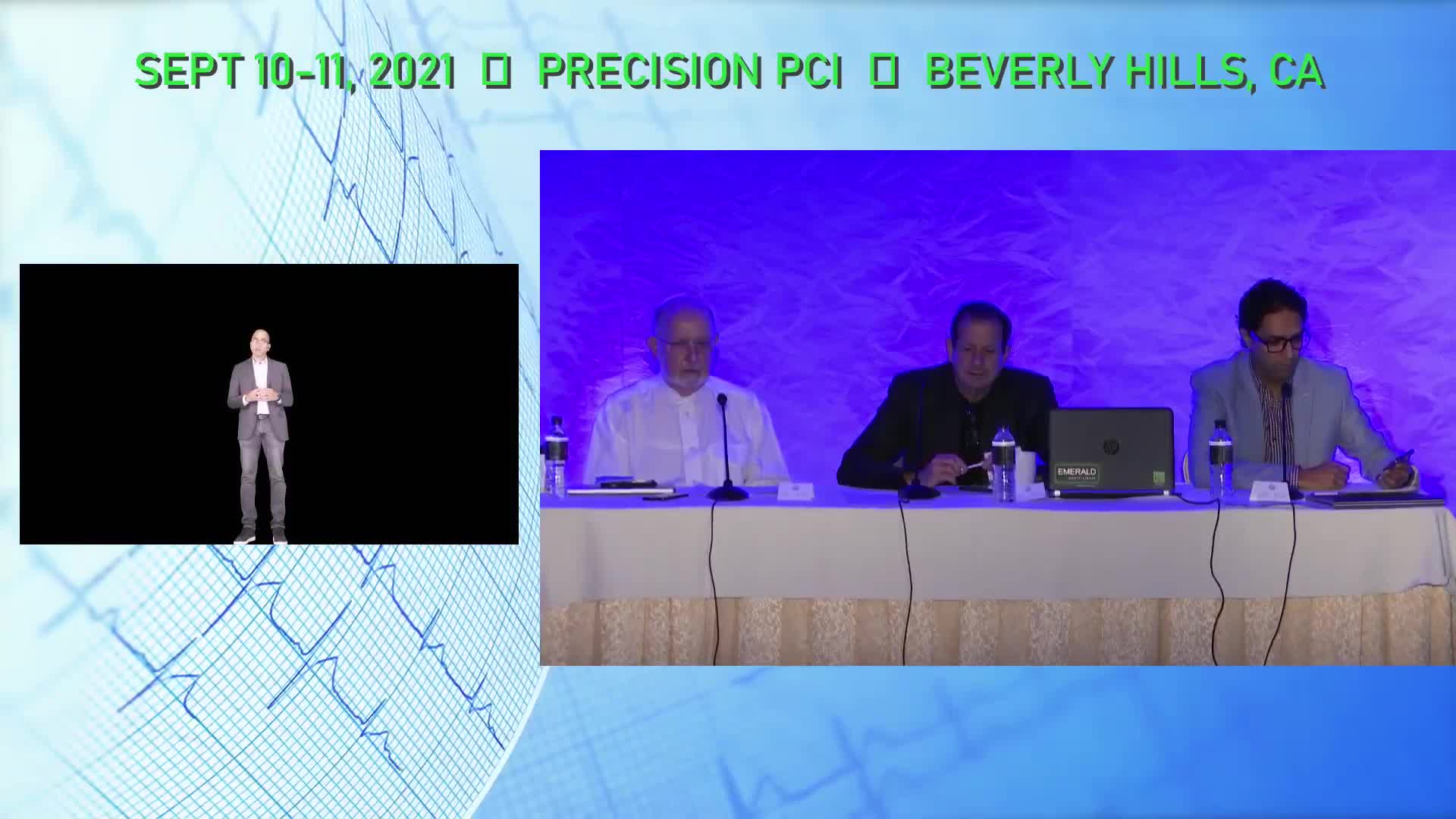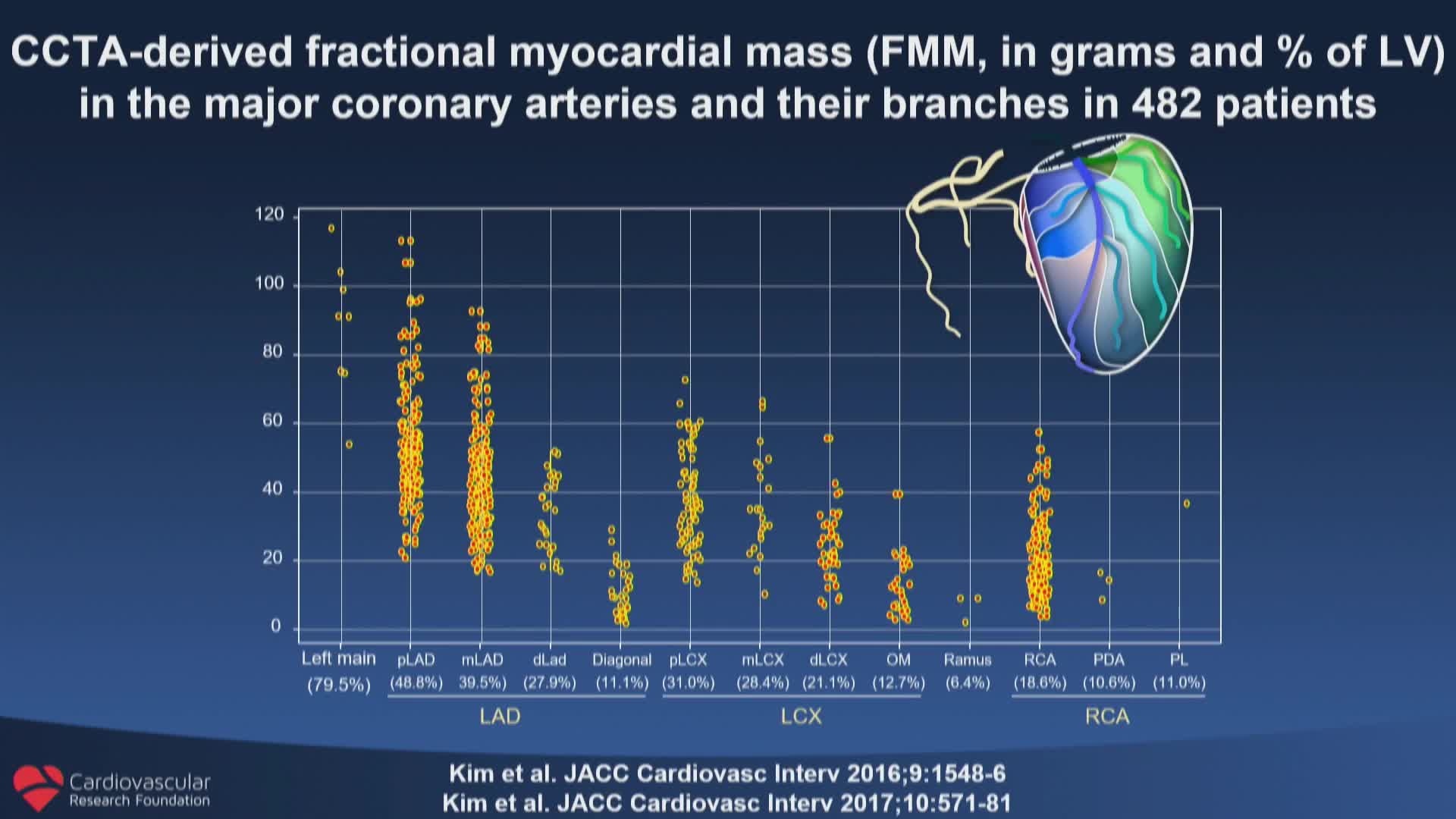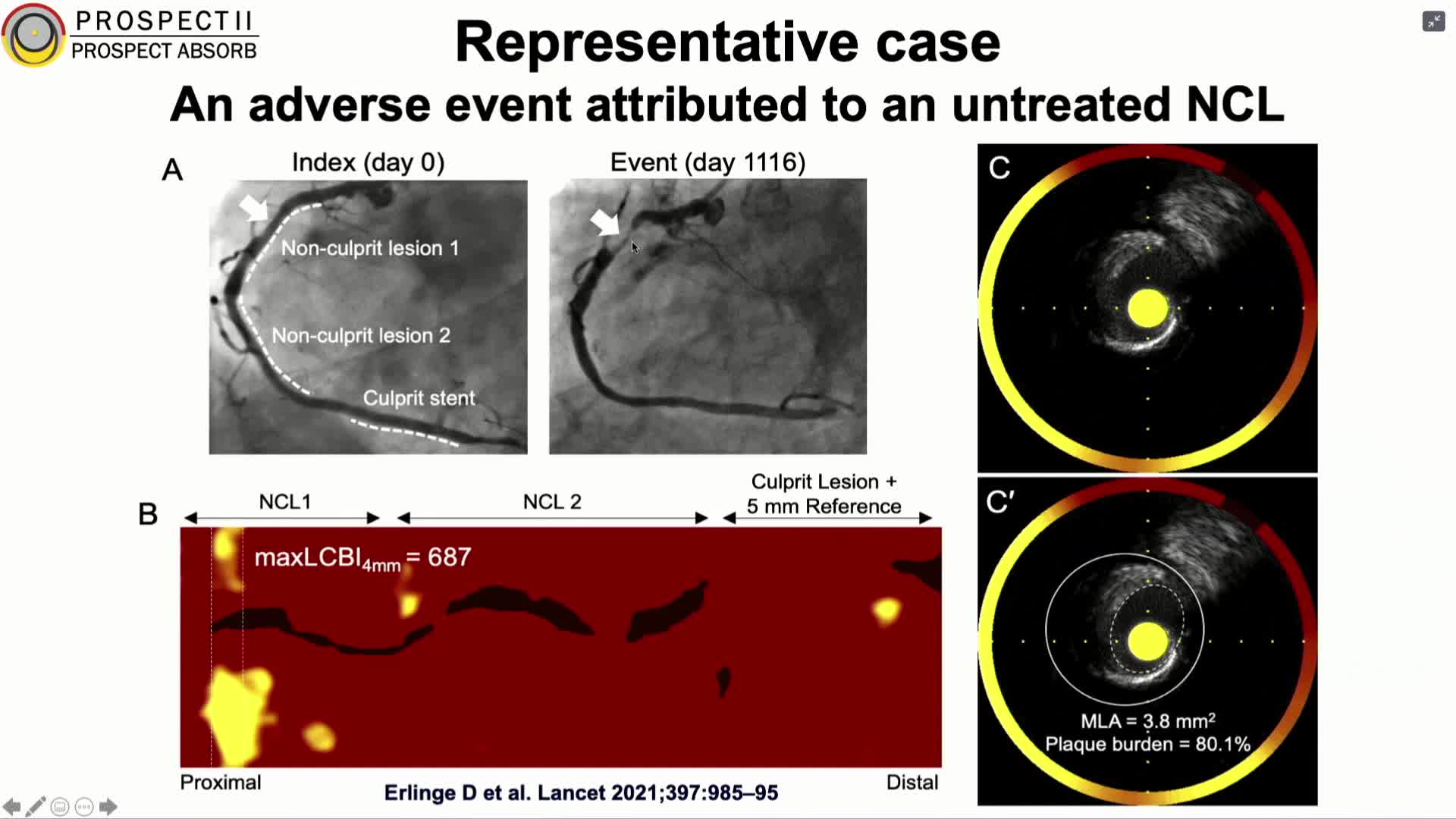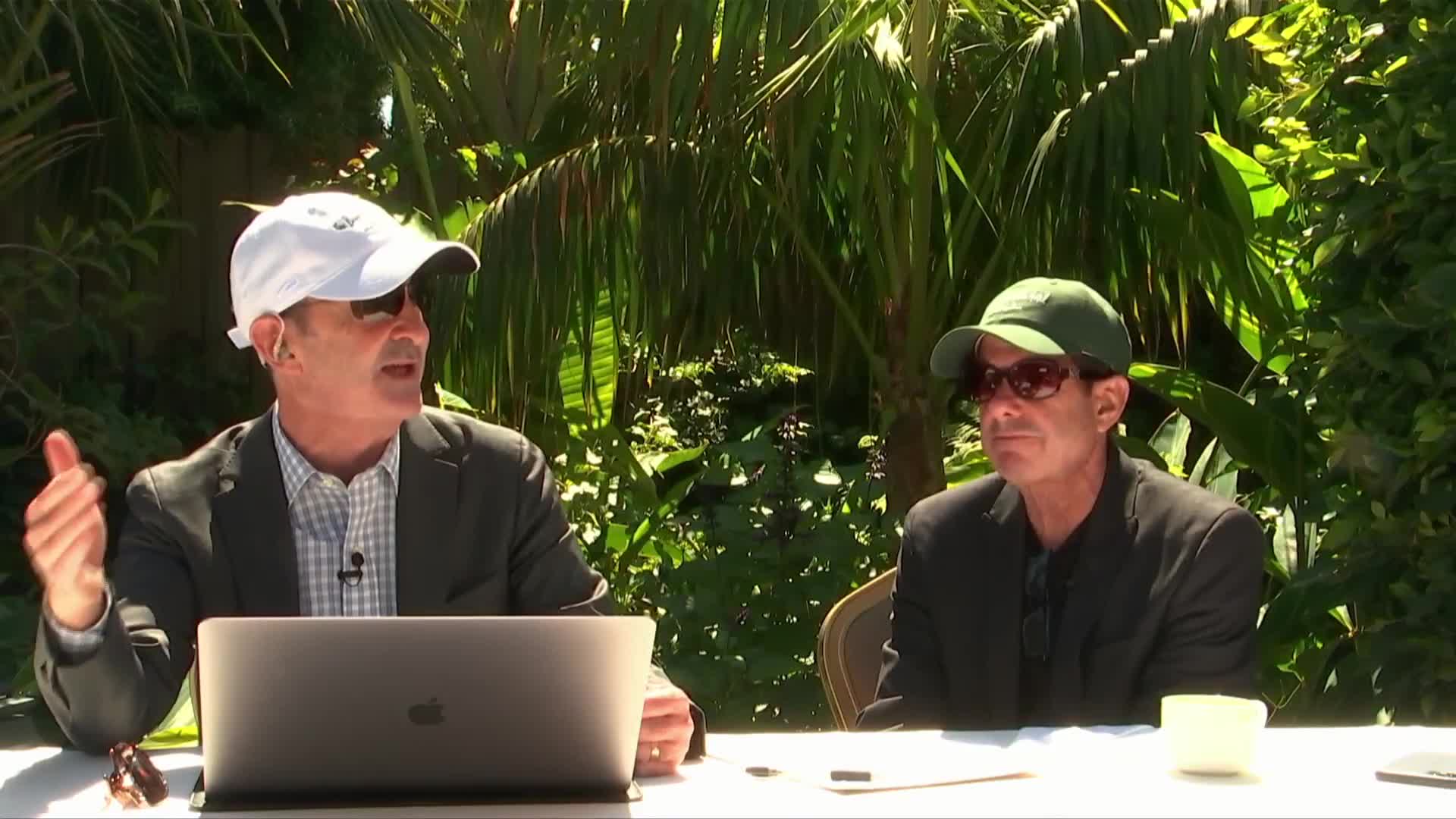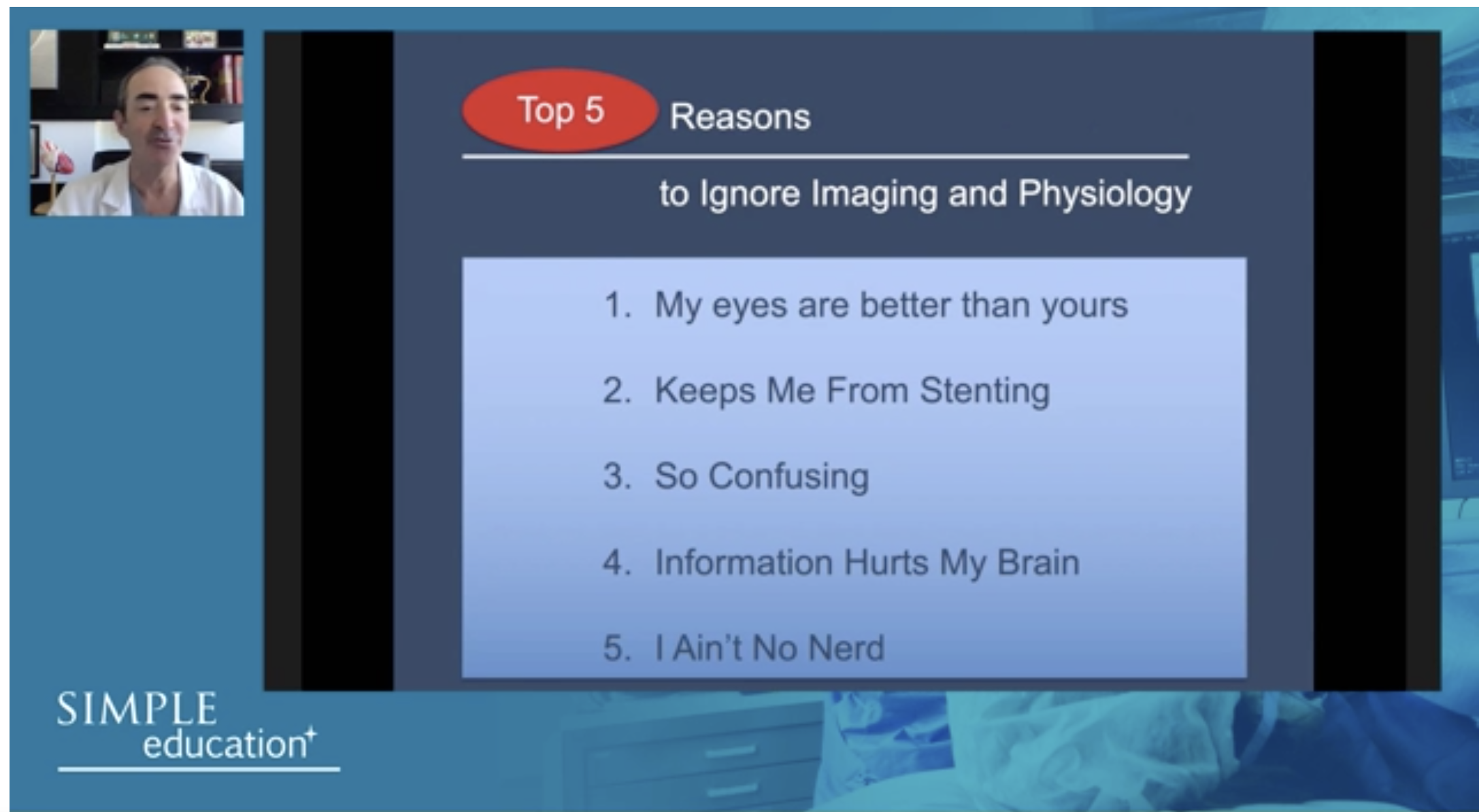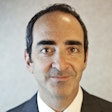
Bruce Samuels presents Precision PCI

Course director / Course Co-director

Bruce Samuels
Dr. Bruce Samuels is an interventional cardiologist on staff at Cedars-Sinai Medical Center...
Read More
Dr. Bruce Samuels is an interventional cardiologist on staff at Cedars-Sinai Medical Center (CSMC) in Los Angeles, California. Dr. Samuels completed his medical studies at Albert Einstein College of Medicine in New York before returning to Southern California to complete his residency and chief residency in Internal Medicine at Harbor-UCLA Medical Center. At CSMC, he trained in both general and interventional cardiology before joining the medical staff there. In addition to his clinical practice in coronary intervention, Dr. Samuels has actively participated in numerous interventional trials including IVUS guided therapy, coronary physiology and microvascular disease. He is also working closely with the Barbra Streisand Women’s Heart Center based at CSMC, working as an interventionalist in the active coronary reactivity research there. As co-chair of a 30-day readmissions task force, he has helped to shape policy for CSMC in its efforts to improve quality delivery of care. He has frequently been invited as faculty to many scientific meetings and is a sought after speaker for numerous peer educational platforms. Dr. Samuels is a fellow of the American College of Cardiology and is Board Certified in Internal Medicine, Cardiovascular Diseases, and Interventional Cardiology. He is married with three sons; his outside interests include contemporary art and long distance running.
Show Less

Paul Teirstein
Paul Teirstein, MD, is the Chief of Cardiology and Director of Interventional Cardiology for...
Read More
Paul Teirstein, MD, is the Chief of Cardiology and Director of Interventional Cardiology for Scripps Clinic and Director of the Scripps Prebys Cardiovascular Institute for Scripps Health. With a primary focus on complex coronary interventions and new technology development, Dr. Teirstein has played an active role in the initial development and clinical investigation of coronary stent procedures, rotablator atherectomy, coronary angioscopy and the utilization of cardiopulmonary support. Dr. Teirstein pioneered the first effective treatment for restenosis (low dose radiation therapy) and was one of the early investigators of medicated and bioabsorbable stents. Recent areas of investigation include new technology for minimally invasive transcatheter aortic valve replacement (TAVR). Dr. Teirstein currently performs in excess of 800 stent procedures per year and maintains an active clinical research and teaching unit at Scripps Clinic where he strives to offer patients the most advanced cardiovascular care available worldwide.
Show Less
Bruce Samuels
Dr. Bruce Samuels is an interventional cardiologist on staff at Cedars-Sinai Medical Center...
Read MoreDr. Bruce Samuels is an interventional cardiologist on staff at Cedars-Sinai Medical Center (CSMC) in Los Angeles, California. Dr. Samuels completed his medical studies at Albert Einstein College of Medicine in New York before returning to Southern California to complete his residency and chief residency in Internal Medicine at Harbor-UCLA Medical Center. At CSMC, he trained in both general and interventional cardiology before joining the medical staff there. In addition to his clinical practice in coronary intervention, Dr. Samuels has actively participated in numerous interventional trials including IVUS guided therapy, coronary physiology and microvascular disease. He is also working closely with the Barbra Streisand Women’s Heart Center based at CSMC, working as an interventionalist in the active coronary reactivity research there. As co-chair of a 30-day readmissions task force, he has helped to shape policy for CSMC in its efforts to improve quality delivery of care. He has frequently been invited as faculty to many scientific meetings and is a sought after speaker for numerous peer educational platforms. Dr. Samuels is a fellow of the American College of Cardiology and is Board Certified in Internal Medicine, Cardiovascular Diseases, and Interventional Cardiology. He is married with three sons; his outside interests include contemporary art and long distance running.
Show LessPaul Teirstein
Paul Teirstein, MD, is the Chief of Cardiology and Director of Interventional Cardiology for...
Read MorePaul Teirstein, MD, is the Chief of Cardiology and Director of Interventional Cardiology for Scripps Clinic and Director of the Scripps Prebys Cardiovascular Institute for Scripps Health. With a primary focus on complex coronary interventions and new technology development, Dr. Teirstein has played an active role in the initial development and clinical investigation of coronary stent procedures, rotablator atherectomy, coronary angioscopy and the utilization of cardiopulmonary support. Dr. Teirstein pioneered the first effective treatment for restenosis (low dose radiation therapy) and was one of the early investigators of medicated and bioabsorbable stents. Recent areas of investigation include new technology for minimally invasive transcatheter aortic valve replacement (TAVR). Dr. Teirstein currently performs in excess of 800 stent procedures per year and maintains an active clinical research and teaching unit at Scripps Clinic where he strives to offer patients the most advanced cardiovascular care available worldwide.
Show LessFaculty

Ziad Ali
Ziad Ali is the Director of the DeMatteis Cardiovascular Institute, Director of Investigational...
Read More
Ziad Ali is the Director of the DeMatteis Cardiovascular Institute, Director of Investigational Interventional Cardiology, and Director of Cardio-nephrology at St Francis Hospital & Heart Center in New York. He is also Director of the Angiographic Core Laboratory at Cardiovascular Research Foundation and Associate Professor of Medicine at Columbia University Medical Center. His clinical research interests focus on the use of intravascular imaging and physiology technologies such as optical coherence tomography, intravascular ultrasound, and flow wire assessment to optimize coronary interventions, for which he has served as a Global principal investigator on a number of trials. Dr. Ali is also a recognized innovator, playing an integral role in the development of the Resting Full-Cycle Ratio (RFR) and Shockwave intravascular lithotripsy. Clinically Dr. Ali developed pioneering techniques to perform vascular interventions without contrast administration, including IVUS-guided zero-contrast PCI and OCT using saline flush media, protecting patients with advanced kidney disease from acute kidney injury and the need for dialysis.
Show Less

Rasha Al-Lamee
Dr Rasha Al-Lamee is an Interventional Cardiology Consultant at Imperial College Healthcare NHS...
Read More
Dr Rasha Al-Lamee is an Interventional Cardiology Consultant at Imperial College Healthcare NHS Trust in London, UK. Dr Al-Lamee’s research interests are complex coronary intervention, coronary physiology and invasive intravascular assessment. She designed, conducted and led the ORBITA trial and is the lead
author of the primary publication in The Lancet. At Imperial College, she is actively involved in the development and recruitment for a number of multi-centre clinical trials. Dr Al- Lamee has over 40 peer-reviewed publications and has presented at international Cardiology conferences worldwide throughout her clinical career. She studied at the University of Oxford and University College London. She went onto complete her training as a junior doctor on the Barts and the London Medical rotation before being appointed as a Specialist Registrar on the North West London Cardiology rotation in 2006.
Dr Al-Lamee has twelve years of Cardiology experience and completed three years of Interventional Fellowship training at Hammersmith Hospital in London. She also spent a year training as an Interventional Fellow under the supervision of Professor Antonio Colombo in Milan. She completed specialist training in Cardiology in 2013.
Show Less

Justin Davies
Dr Justin Davies is a clinical academic and consultant interventional cardiologist at the...
Read More
Dr Justin Davies is a clinical academic and consultant interventional cardiologist at the National Heart and Lung Institute, Imperial College London.
After training at Imperial College, he won a prestigious BHF research fellowship to study arterial haemodynamics. Since then he has continued to work on the development of mathematical algorithms to aid understanding of large artery physiology and to develop new tools to assess arterial disease.
The holder of several patents, he has published widely in the field of hypertension, coronary and large artery physiology and is the winner of many national and international awards. He has several international collaborations, and is the developer of iFR and the co-principal investigator of the ADVISE studies, the DEFINE-FLAIR, ORBITA and DEFINE-PCI studies. Justin also has an interest in renal denervation, and has lead the first-in-man studies to evaluate the safety of this technique to patients with chronic systolic heart failure (REACH studies).
Show Less

Allen Jeremias
Allen Jeremias, MD, MSc, is the Director of Interventional Cardiology Research and Associate...
Read More
Allen Jeremias, MD, MSc, is the Director of Interventional Cardiology Research and Associate Director of the Cardiac Catheterization Laboratory at St. Francis Hospital in Roslyn, New York. He is also a member of the Cardiovascular Research Foundation in New York City where he currently serves as the Director of the Physiology Core Laboratory. He completed his medical training at The Cleveland Clinic Foundation, Stanford University School of Medicine, and Harvard Medical School. He has been a high volume interventional cardiologist since 2006 and recognized as a Top Doctor in the New York Metro Area by Castle Connolly. Dr. Jeremias has significantly contributed to advancing the field of interventional cardiology and he is considered one of the foremost authorities in coronary physiology and intravascular imaging. He is a co-director of the annual St. Francis Intravascular Imaging and Coronary Physiology Workshop, teaching physicians around the world on “Precision Angioplasty”. Dr. Jeremias is presently engaged in a major global study that could change the path of treating clogged arteries. Known as the ILUMIEN IV trial, this major clinical study is evaluating Optical Coherence Tomography (OCT) to guide coronary stent placement. He is also the principal investigator of DEFINE PCI, an international study on assessing the improvement in blood flow after stent placement for severe coronary blockages.
Show Less

Ajay Kirtane
Ajay J. Kirtane, MD, SM, is a Professor of Medicine at Columbia University Medical Center and...
Read More
Ajay J. Kirtane, MD, SM, is a Professor of Medicine at Columbia University Medical Center and Director of the Cardiac Catheterization Laboratories at New York Presbyterian Hospital. Dr. Kirtane is a graduate of Princeton University and Columbia University College of Physicians and Surgeons, and completed his residency in Internal Medicine at the University of California – San Francisco.
Dr. Kirtane is a practicing Cardiologist with an interest in coronary and peripheral intervention and assumed the directorship of the NYP/Columbia cardiac catheterization laboratories in 2015. In addition to his clinical commitments at CUMC, Dr. Kirtane has a strong interest in clinical education and research, serving as Chief Academic Officer of the Center for Interventional Vascular Therapy. On the national and international level, he is a co-director of the Cardiovascular Research Foundation’s Transcatheter Cardiovascular Therapeutics meeting, has served as a director of several international, national, and regional educational meetings, and has participated on the program committees for the scientific sessions of both the American College of Cardiology and American Heart Association. Dr. Kirtane’s research interests are in clinical trial methodology and outcomes of device-based and pharmacologic interventions in Interventional Cardiology. He has authored/co-authored >150 original manuscripts and >50 reviews and chapters including the “Coronary Stenting” chapters of the two most widely used textbooks in Interventional Cardiology.
Show Less

Gary Mintz
Gary S. Mintz, MD, is a Senior Medical Advisor at the Cardiovascular Research Foundation (CRF,...
Read More
Gary S. Mintz, MD, is a Senior Medical Advisor at the Cardiovascular Research Foundation (CRF, New York, NY) and a Director of Transcatheter Cardiovascular Therapeutics (TCT). He is the author of more than 1000 peer reviewed articles, 60 book chapters, 4 books, and 850 abstracts concerning various aspects of clinical cardiology, cardiac ultrasound, hemodynamics, cardiac radiology and coronary arteriography, interventional cardiology, and (especially) intravascular imaging and physiology. In 2005, Dr. Mintz published his single-authored textbook Intracoronary Ultrasound that has now been translated into Chinese. In 2014, Dr. Mintz received the Master of the Masters Career Achievement Award at the TCTAP-Cardiovascular Summit in Seoul, Korea; in 2015 Dr. Mintz received the Chien Foundation Outstanding Lectureship & Lifetime Achievement Award, also presented at TCTAP-Cardiovascular Summit in Seoul, Korea; in 2017 Dr. Mintz received the Outstanding Achievement Award at CBS 2017, Nanjing, China; in 2018 Dr. Mintz received the Career Achievement Award at NFIC in Krakow, Poland; and in 2020 Dr. Mintz received the Jiangsu Friendship Award from the People’s Government of Jiangsu Province, China, the highest award presented to a non-Chinese. He also serves as a Senior Scientist and Advisor at the Medstar Cardiovascular Research Network, Washington, DC. Dr. Mintz completed his undergraduate education at the University of Pennsylvania in 1970 and received his medical degree from Hahnemann University (now part of Drexel University), in 1974, both in Philadelphia, PA. He finished his internship in 1975, residency in 1976, and cardiology fellowship in 1978, each at Hahnemann University. He joined the Hahnemann University Department of Medicine faculty in 1978 and was ultimately promoted to Professor of Medicine in 1987 before joining CRF in 1991. His past appointments at CRF have included Chief Medical Officer and Editor-in-Chief (and one of the founders) of TCTMD.com.
Show Less

Sukhjinder Nijjer
Dr Sukhjinder Nijjer is a Consultant Cardiologist and Honorary Senior Clinical Lecturer at...
Read More
Dr Sukhjinder Nijjer is a Consultant Cardiologist and Honorary Senior Clinical Lecturer at Imperial College London. He is the President of Cardiology at the Royal Society of Medicine and is the Communication Lead for the British Cardiovascular Intervention Society. He works at the Hammersmith Hospital as an Interventional Cardiologist and is an expert in Coronary Physiology. His PhD research focused on the development of instantaneous wave-free ratio (iFR) pullback and co-registration. He has published over 100 original academic papers and has involved in the DEFINE-FLAIR, SYNTAX-II and ORBITA-1 and ORBITA-2 research studies.
Show Less

Sunil Rao
Dr. Rao is Professor of Medicine at Duke University Medical Center, and the Section Chief of...
Read More
Dr. Rao is Professor of Medicine at Duke University Medical Center, and the Section Chief of Cardiology at the Durham VA Medical Center.
At the national level, Dr. Rao serves as the Editor-in-Chief for Circulation Cardiovascular Interventions, the interventional journal of the American Heart Association’s flagship Circulation family of journals. He is the President-Elect for The Society for Cardiovascular Angiography and Interventions, and serves on the program committees of the ACC Scientific Sessions, the Transcatheter Cardiovascular Therapeutics conference, and the SCAI Scientific Sessions. He was the chairman of the 2017 ACC-i2 Summit and was the chair of the SCAI 2019 Annual Scientific Session. In addition, he was the Editor-in-Chief of the ACC CathSAP 5 program and is currently the co-chair of the ACC Collaborative Management Pathway for Interventional Cardiology.
His main research interests are pharmacological and interventional therapies for acute coronary syndromes, as well as bleeding and blood transfusion complications among patients with ischemic heart disease. Dr. Rao has published over 300 peer-reviewed papers, and is the co-Editor-in-Chief of the seminal textbook on transradial procedures titled “Best Practices for Transradial Approach in Diagnostic Angiography and Intervention.”
Show Less

Andrew Sharp
Dr Sharp qualified from Edinburgh Medical School in 1998. He was appointed as a Consultant...
Read More
Dr Sharp qualified from Edinburgh Medical School in 1998. He was appointed as a Consultant Cardiologist at the Royal Devon and Exeter Hospital in 2011 and Honorary Associate Professor by the University of Exeter in 2018 before moving to the University Hospital of Wales in the summer of 2019.
He conducted his early training at the Royal Infirmary of Edinburgh, before moving to London for his senior clinical training. He completed the prestigious Milan-Imperial Interventional Cardiology Fellowship programme, having spent a year in San Raffaele and Columbus Hospitals, Milan, Italy, under the tutelage of Professor Antonio Colombo. He also spent three years training in interventional cardiology at St Mary’s Hospital and The Hammersmith Hospital (Imperial College Hospitals) in London.
Dr Sharp was awarded an MD postgraduate research degree from the University of Edinburgh for his work on the hypertensive heart and led a large research programme at the Royal Devon and Exeter Hospital, which he is now establishing in Wales. He has been Principal Investigator in more than 30 ethically-approved research trials since 2012 and has published extensively. He has an international reputation for leading the development of device-based treatments for hypertension (in particular that of renal denervation) and pulmonary embolism, as well as the advancement of intracoronary imaging and physiology.
Show Less

Evan Shlofmitz
Dr. Evan Shlofmitz is an Interventional Cardiologist and the Director of Intravascular Imaging at...
Read More
Dr. Evan Shlofmitz is an Interventional Cardiologist and the Director of Intravascular Imaging at St. Francis Hospital - The Heart Center in Roslyn, NY. He completed a fellowship in Interventional Cardiology at Georgetown University/MedStar Washington Hospital Center. He previously completed an Intravascular Imaging and Physiology fellowship at the Cardiovascular Research Foundation (CRF) and Columbia University Medical Center (CUMC), a Cardiovascular Disease fellowship at Northwell Health and served as Chief Resident for Internal Medicine at New York Presbyterian Queens. He serves on SCAI's IHD Council and is a co-director of Optimizing PCI (OPCI). His research interests have centered on intravascular imaging, the treatment of calcified coronary artery disease, in-stent restenosis and the optimization of stent implantation, with more than 100 publications in peer-reviewed journals.
Show Less

Richard Shlofmitz
Dr Richard A. Shlofmitz, MD, FACC is the Chairman of Cardiology at St. Francis Hospital, The...
Read More
Dr Richard A. Shlofmitz, MD, FACC is the Chairman of Cardiology at St. Francis Hospital, The Heart Center®, in Roslyn, New York. A pioneer in interventional cardiology, Dr. Shlofmitz has worked to advance the field, with a focus on optimizing outcomes with the development of Precision PCI. He is a founding co-director of the annual Intravascular Imaging and Coronary Physiology Workshop. Performing over 1,000 coronary interventions annually, he has one of the largest volumes of experience in PCI. He has the most clinical experience with orbital atherectomy and OCT world-wide. His clinical research interests focus on optimizing coronary interventions and he serves on multiple scientific advisory boards and clinical trial steering committees to further this mission. Dr Shlofmitz has been one of the largest enrollers for multiple clinical trials, including TWILIGHT, ILUMIEN III, and Onyx, with more than 75 publications in peer-reviewed journals and was first to perform coronary intravascular lithotripsy (IVL) in North America as part of the DISRUPT CAD III trial.
Show Less

Gregg Stone
Gregg W. Stone, MD, FACC, MSCAI is an interventional cardiologist and Director of Academic...
Read More
Gregg W. Stone, MD, FACC, MSCAI is an interventional cardiologist and Director of Academic Affairs for the Mount Sinai Heart Health System and Professor of Medicine (Cardiology) and Professor of Population Health Sciences and Policy at the Icahn School of Medicine at Mount Sinai in New York, NY. Dr. Stone has served as the national or international principal investigator for more than 120 national and international multicenter randomized trials (many of which have led to new device approval or indications in the US), has authored more than 2000 manuscripts and abstracts published in the peer-reviewed literature, and has delivered thousands of invited lectures around the world. With a 2018 H-factor of 152, Dr. Stone was recently listed in Nature Medicine as one of the most prolific authors in science. Dr. Stone's areas of expertise include interventional therapies of acute coronary syndromes, myocardial infarction and cardiogenic shock; drug-eluting stents and bioresorbable scaffolds; left main and complex coronary artery disease intervention; antiplatelet and antithrombotic pharmacotherapies; transcatheter valve repair and replacement; interventional hypertension and heart failure therapies; left atrial appendage closure; intravascular imaging (IVUS, OCT and NIRS); vulnerable plaque diagnosis and treatment; adjunctive interventional devices including atherectomy, distal embolic protection, thrombectomy, covered stents, chronic total occlusion devices, and brachytherapy; saphenous vein graft therapies; contrast nephropathy; clinical trial design; and regulatory issues.
Dr. Stone is the director of Transcatheter Cardiovascular Therapeutics (TCT), the world's largest symposium devoted to interventional cardiology and vascular medicine. Dr. Stone founded the annual National Interventional Cardiology Fellow's Course and Transcatheter Valve Therapies TVT), the Chronic Total Occlusion (CTO) Summit, and co-directs multiple other meetings in the US, China, Russia, Europe, S. Korea and elsewhere.
Show Less
Ziad Ali
Ziad Ali is the Director of the DeMatteis Cardiovascular Institute, Director of Investigational...
Read MoreZiad Ali is the Director of the DeMatteis Cardiovascular Institute, Director of Investigational Interventional Cardiology, and Director of Cardio-nephrology at St Francis Hospital & Heart Center in New York. He is also Director of the Angiographic Core Laboratory at Cardiovascular Research Foundation and Associate Professor of Medicine at Columbia University Medical Center. His clinical research interests focus on the use of intravascular imaging and physiology technologies such as optical coherence tomography, intravascular ultrasound, and flow wire assessment to optimize coronary interventions, for which he has served as a Global principal investigator on a number of trials. Dr. Ali is also a recognized innovator, playing an integral role in the development of the Resting Full-Cycle Ratio (RFR) and Shockwave intravascular lithotripsy. Clinically Dr. Ali developed pioneering techniques to perform vascular interventions without contrast administration, including IVUS-guided zero-contrast PCI and OCT using saline flush media, protecting patients with advanced kidney disease from acute kidney injury and the need for dialysis.
Show LessRasha Al-Lamee
Dr Rasha Al-Lamee is an Interventional Cardiology Consultant at Imperial College Healthcare NHS...
Read MoreDr Rasha Al-Lamee is an Interventional Cardiology Consultant at Imperial College Healthcare NHS Trust in London, UK. Dr Al-Lamee’s research interests are complex coronary intervention, coronary physiology and invasive intravascular assessment. She designed, conducted and led the ORBITA trial and is the lead author of the primary publication in The Lancet. At Imperial College, she is actively involved in the development and recruitment for a number of multi-centre clinical trials. Dr Al- Lamee has over 40 peer-reviewed publications and has presented at international Cardiology conferences worldwide throughout her clinical career. She studied at the University of Oxford and University College London. She went onto complete her training as a junior doctor on the Barts and the London Medical rotation before being appointed as a Specialist Registrar on the North West London Cardiology rotation in 2006. Dr Al-Lamee has twelve years of Cardiology experience and completed three years of Interventional Fellowship training at Hammersmith Hospital in London. She also spent a year training as an Interventional Fellow under the supervision of Professor Antonio Colombo in Milan. She completed specialist training in Cardiology in 2013.
Show LessJustin Davies
Dr Justin Davies is a clinical academic and consultant interventional cardiologist at the...
Read MoreDr Justin Davies is a clinical academic and consultant interventional cardiologist at the National Heart and Lung Institute, Imperial College London. After training at Imperial College, he won a prestigious BHF research fellowship to study arterial haemodynamics. Since then he has continued to work on the development of mathematical algorithms to aid understanding of large artery physiology and to develop new tools to assess arterial disease. The holder of several patents, he has published widely in the field of hypertension, coronary and large artery physiology and is the winner of many national and international awards. He has several international collaborations, and is the developer of iFR and the co-principal investigator of the ADVISE studies, the DEFINE-FLAIR, ORBITA and DEFINE-PCI studies. Justin also has an interest in renal denervation, and has lead the first-in-man studies to evaluate the safety of this technique to patients with chronic systolic heart failure (REACH studies).
Show LessAllen Jeremias
Allen Jeremias, MD, MSc, is the Director of Interventional Cardiology Research and Associate...
Read MoreAllen Jeremias, MD, MSc, is the Director of Interventional Cardiology Research and Associate Director of the Cardiac Catheterization Laboratory at St. Francis Hospital in Roslyn, New York. He is also a member of the Cardiovascular Research Foundation in New York City where he currently serves as the Director of the Physiology Core Laboratory. He completed his medical training at The Cleveland Clinic Foundation, Stanford University School of Medicine, and Harvard Medical School. He has been a high volume interventional cardiologist since 2006 and recognized as a Top Doctor in the New York Metro Area by Castle Connolly. Dr. Jeremias has significantly contributed to advancing the field of interventional cardiology and he is considered one of the foremost authorities in coronary physiology and intravascular imaging. He is a co-director of the annual St. Francis Intravascular Imaging and Coronary Physiology Workshop, teaching physicians around the world on “Precision Angioplasty”. Dr. Jeremias is presently engaged in a major global study that could change the path of treating clogged arteries. Known as the ILUMIEN IV trial, this major clinical study is evaluating Optical Coherence Tomography (OCT) to guide coronary stent placement. He is also the principal investigator of DEFINE PCI, an international study on assessing the improvement in blood flow after stent placement for severe coronary blockages.
Show LessAjay Kirtane
Ajay J. Kirtane, MD, SM, is a Professor of Medicine at Columbia University Medical Center and...
Read MoreAjay J. Kirtane, MD, SM, is a Professor of Medicine at Columbia University Medical Center and Director of the Cardiac Catheterization Laboratories at New York Presbyterian Hospital. Dr. Kirtane is a graduate of Princeton University and Columbia University College of Physicians and Surgeons, and completed his residency in Internal Medicine at the University of California – San Francisco. Dr. Kirtane is a practicing Cardiologist with an interest in coronary and peripheral intervention and assumed the directorship of the NYP/Columbia cardiac catheterization laboratories in 2015. In addition to his clinical commitments at CUMC, Dr. Kirtane has a strong interest in clinical education and research, serving as Chief Academic Officer of the Center for Interventional Vascular Therapy. On the national and international level, he is a co-director of the Cardiovascular Research Foundation’s Transcatheter Cardiovascular Therapeutics meeting, has served as a director of several international, national, and regional educational meetings, and has participated on the program committees for the scientific sessions of both the American College of Cardiology and American Heart Association. Dr. Kirtane’s research interests are in clinical trial methodology and outcomes of device-based and pharmacologic interventions in Interventional Cardiology. He has authored/co-authored >150 original manuscripts and >50 reviews and chapters including the “Coronary Stenting” chapters of the two most widely used textbooks in Interventional Cardiology.
Show LessGary Mintz
Gary S. Mintz, MD, is a Senior Medical Advisor at the Cardiovascular Research Foundation (CRF,...
Read MoreGary S. Mintz, MD, is a Senior Medical Advisor at the Cardiovascular Research Foundation (CRF, New York, NY) and a Director of Transcatheter Cardiovascular Therapeutics (TCT). He is the author of more than 1000 peer reviewed articles, 60 book chapters, 4 books, and 850 abstracts concerning various aspects of clinical cardiology, cardiac ultrasound, hemodynamics, cardiac radiology and coronary arteriography, interventional cardiology, and (especially) intravascular imaging and physiology. In 2005, Dr. Mintz published his single-authored textbook Intracoronary Ultrasound that has now been translated into Chinese. In 2014, Dr. Mintz received the Master of the Masters Career Achievement Award at the TCTAP-Cardiovascular Summit in Seoul, Korea; in 2015 Dr. Mintz received the Chien Foundation Outstanding Lectureship & Lifetime Achievement Award, also presented at TCTAP-Cardiovascular Summit in Seoul, Korea; in 2017 Dr. Mintz received the Outstanding Achievement Award at CBS 2017, Nanjing, China; in 2018 Dr. Mintz received the Career Achievement Award at NFIC in Krakow, Poland; and in 2020 Dr. Mintz received the Jiangsu Friendship Award from the People’s Government of Jiangsu Province, China, the highest award presented to a non-Chinese. He also serves as a Senior Scientist and Advisor at the Medstar Cardiovascular Research Network, Washington, DC. Dr. Mintz completed his undergraduate education at the University of Pennsylvania in 1970 and received his medical degree from Hahnemann University (now part of Drexel University), in 1974, both in Philadelphia, PA. He finished his internship in 1975, residency in 1976, and cardiology fellowship in 1978, each at Hahnemann University. He joined the Hahnemann University Department of Medicine faculty in 1978 and was ultimately promoted to Professor of Medicine in 1987 before joining CRF in 1991. His past appointments at CRF have included Chief Medical Officer and Editor-in-Chief (and one of the founders) of TCTMD.com.
Show LessSukhjinder Nijjer
Dr Sukhjinder Nijjer is a Consultant Cardiologist and Honorary Senior Clinical Lecturer at...
Read MoreDr Sukhjinder Nijjer is a Consultant Cardiologist and Honorary Senior Clinical Lecturer at Imperial College London. He is the President of Cardiology at the Royal Society of Medicine and is the Communication Lead for the British Cardiovascular Intervention Society. He works at the Hammersmith Hospital as an Interventional Cardiologist and is an expert in Coronary Physiology. His PhD research focused on the development of instantaneous wave-free ratio (iFR) pullback and co-registration. He has published over 100 original academic papers and has involved in the DEFINE-FLAIR, SYNTAX-II and ORBITA-1 and ORBITA-2 research studies.
Show LessSunil Rao
Dr. Rao is Professor of Medicine at Duke University Medical Center, and the Section Chief of...
Read MoreDr. Rao is Professor of Medicine at Duke University Medical Center, and the Section Chief of Cardiology at the Durham VA Medical Center. At the national level, Dr. Rao serves as the Editor-in-Chief for Circulation Cardiovascular Interventions, the interventional journal of the American Heart Association’s flagship Circulation family of journals. He is the President-Elect for The Society for Cardiovascular Angiography and Interventions, and serves on the program committees of the ACC Scientific Sessions, the Transcatheter Cardiovascular Therapeutics conference, and the SCAI Scientific Sessions. He was the chairman of the 2017 ACC-i2 Summit and was the chair of the SCAI 2019 Annual Scientific Session. In addition, he was the Editor-in-Chief of the ACC CathSAP 5 program and is currently the co-chair of the ACC Collaborative Management Pathway for Interventional Cardiology. His main research interests are pharmacological and interventional therapies for acute coronary syndromes, as well as bleeding and blood transfusion complications among patients with ischemic heart disease. Dr. Rao has published over 300 peer-reviewed papers, and is the co-Editor-in-Chief of the seminal textbook on transradial procedures titled “Best Practices for Transradial Approach in Diagnostic Angiography and Intervention.”
Show LessAndrew Sharp
Dr Sharp qualified from Edinburgh Medical School in 1998. He was appointed as a Consultant...
Read MoreDr Sharp qualified from Edinburgh Medical School in 1998. He was appointed as a Consultant Cardiologist at the Royal Devon and Exeter Hospital in 2011 and Honorary Associate Professor by the University of Exeter in 2018 before moving to the University Hospital of Wales in the summer of 2019. He conducted his early training at the Royal Infirmary of Edinburgh, before moving to London for his senior clinical training. He completed the prestigious Milan-Imperial Interventional Cardiology Fellowship programme, having spent a year in San Raffaele and Columbus Hospitals, Milan, Italy, under the tutelage of Professor Antonio Colombo. He also spent three years training in interventional cardiology at St Mary’s Hospital and The Hammersmith Hospital (Imperial College Hospitals) in London. Dr Sharp was awarded an MD postgraduate research degree from the University of Edinburgh for his work on the hypertensive heart and led a large research programme at the Royal Devon and Exeter Hospital, which he is now establishing in Wales. He has been Principal Investigator in more than 30 ethically-approved research trials since 2012 and has published extensively. He has an international reputation for leading the development of device-based treatments for hypertension (in particular that of renal denervation) and pulmonary embolism, as well as the advancement of intracoronary imaging and physiology.
Show LessEvan Shlofmitz
Dr. Evan Shlofmitz is an Interventional Cardiologist and the Director of Intravascular Imaging at...
Read MoreDr. Evan Shlofmitz is an Interventional Cardiologist and the Director of Intravascular Imaging at St. Francis Hospital - The Heart Center in Roslyn, NY. He completed a fellowship in Interventional Cardiology at Georgetown University/MedStar Washington Hospital Center. He previously completed an Intravascular Imaging and Physiology fellowship at the Cardiovascular Research Foundation (CRF) and Columbia University Medical Center (CUMC), a Cardiovascular Disease fellowship at Northwell Health and served as Chief Resident for Internal Medicine at New York Presbyterian Queens. He serves on SCAI's IHD Council and is a co-director of Optimizing PCI (OPCI). His research interests have centered on intravascular imaging, the treatment of calcified coronary artery disease, in-stent restenosis and the optimization of stent implantation, with more than 100 publications in peer-reviewed journals.
Show LessRichard Shlofmitz
Dr Richard A. Shlofmitz, MD, FACC is the Chairman of Cardiology at St. Francis Hospital, The...
Read MoreDr Richard A. Shlofmitz, MD, FACC is the Chairman of Cardiology at St. Francis Hospital, The Heart Center®, in Roslyn, New York. A pioneer in interventional cardiology, Dr. Shlofmitz has worked to advance the field, with a focus on optimizing outcomes with the development of Precision PCI. He is a founding co-director of the annual Intravascular Imaging and Coronary Physiology Workshop. Performing over 1,000 coronary interventions annually, he has one of the largest volumes of experience in PCI. He has the most clinical experience with orbital atherectomy and OCT world-wide. His clinical research interests focus on optimizing coronary interventions and he serves on multiple scientific advisory boards and clinical trial steering committees to further this mission. Dr Shlofmitz has been one of the largest enrollers for multiple clinical trials, including TWILIGHT, ILUMIEN III, and Onyx, with more than 75 publications in peer-reviewed journals and was first to perform coronary intravascular lithotripsy (IVL) in North America as part of the DISRUPT CAD III trial.
Show LessGregg Stone
Gregg W. Stone, MD, FACC, MSCAI is an interventional cardiologist and Director of Academic...
Read MoreGregg W. Stone, MD, FACC, MSCAI is an interventional cardiologist and Director of Academic Affairs for the Mount Sinai Heart Health System and Professor of Medicine (Cardiology) and Professor of Population Health Sciences and Policy at the Icahn School of Medicine at Mount Sinai in New York, NY. Dr. Stone has served as the national or international principal investigator for more than 120 national and international multicenter randomized trials (many of which have led to new device approval or indications in the US), has authored more than 2000 manuscripts and abstracts published in the peer-reviewed literature, and has delivered thousands of invited lectures around the world. With a 2018 H-factor of 152, Dr. Stone was recently listed in Nature Medicine as one of the most prolific authors in science. Dr. Stone's areas of expertise include interventional therapies of acute coronary syndromes, myocardial infarction and cardiogenic shock; drug-eluting stents and bioresorbable scaffolds; left main and complex coronary artery disease intervention; antiplatelet and antithrombotic pharmacotherapies; transcatheter valve repair and replacement; interventional hypertension and heart failure therapies; left atrial appendage closure; intravascular imaging (IVUS, OCT and NIRS); vulnerable plaque diagnosis and treatment; adjunctive interventional devices including atherectomy, distal embolic protection, thrombectomy, covered stents, chronic total occlusion devices, and brachytherapy; saphenous vein graft therapies; contrast nephropathy; clinical trial design; and regulatory issues. Dr. Stone is the director of Transcatheter Cardiovascular Therapeutics (TCT), the world's largest symposium devoted to interventional cardiology and vascular medicine. Dr. Stone founded the annual National Interventional Cardiology Fellow's Course and Transcatheter Valve Therapies TVT), the Chronic Total Occlusion (CTO) Summit, and co-directs multiple other meetings in the US, China, Russia, Europe, S. Korea and elsewhere.
Show LessPRECISION PCI - 8th October 2022
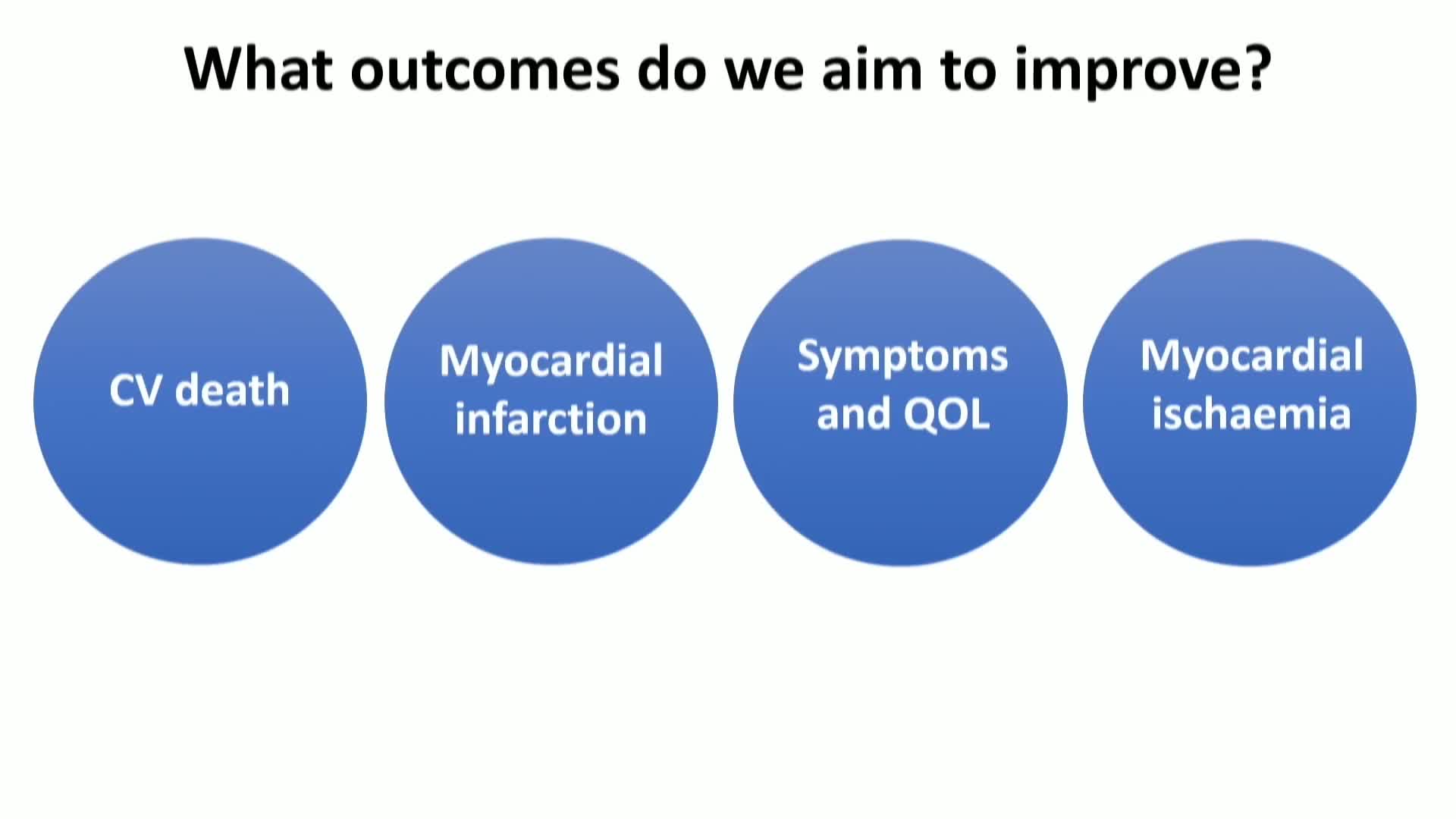
What Are We Trying to Achieve with PCI Anyway? Part 2: Improving Ischemia

Bruce Samuels presents Precision PCI

Get With the Guidelines - Don't Do CTOs, Imaging or High Risk PCI

Bruce Samuels presents Precision PCI
PRECISION PCI - 10th Sept 2021
PRECISION PCI - 11th Sept 2021
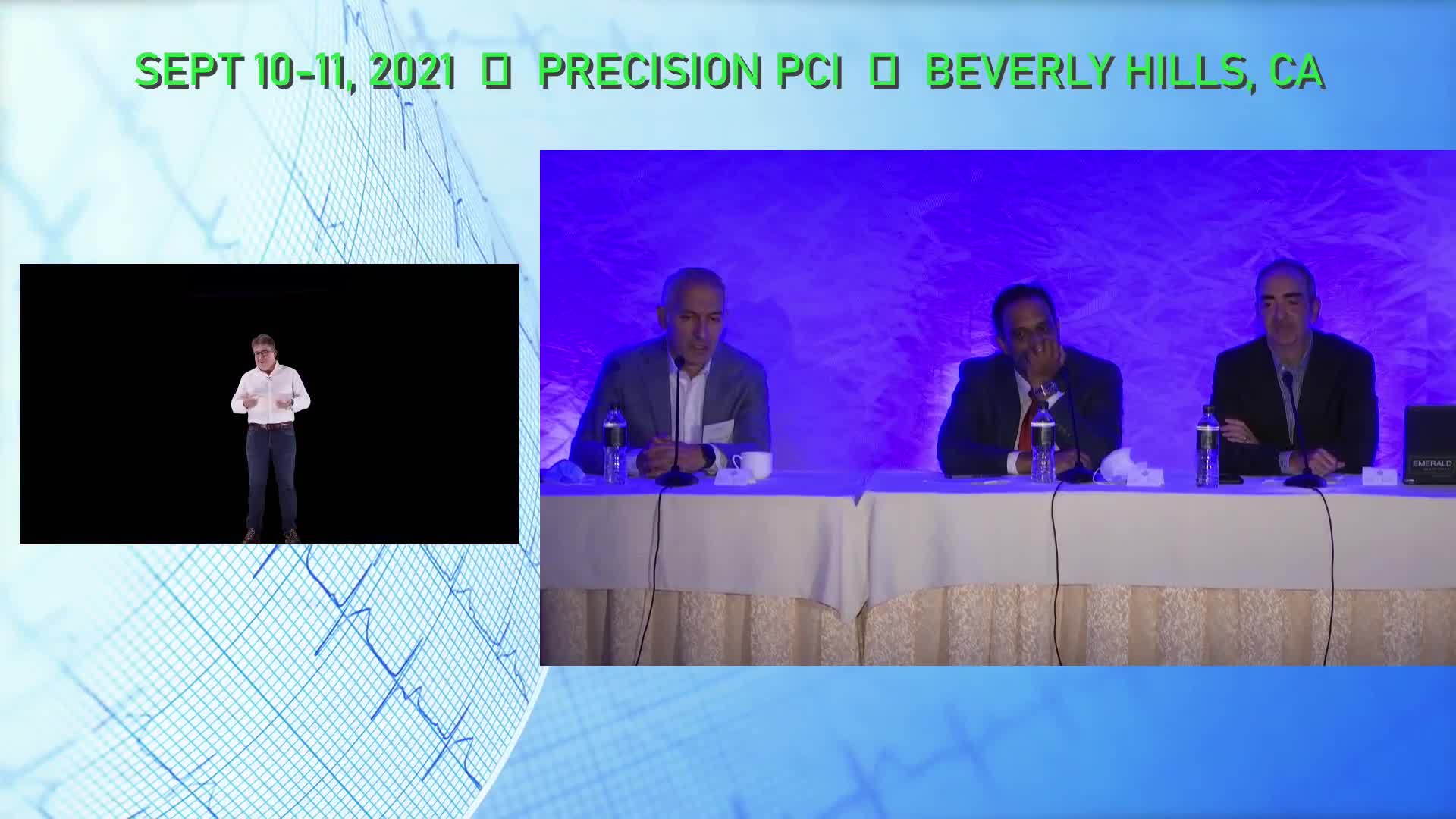
Is FFR Dead? Origins and Advantages of Resting Physiology

Bruce Samuels presents Precision PCI
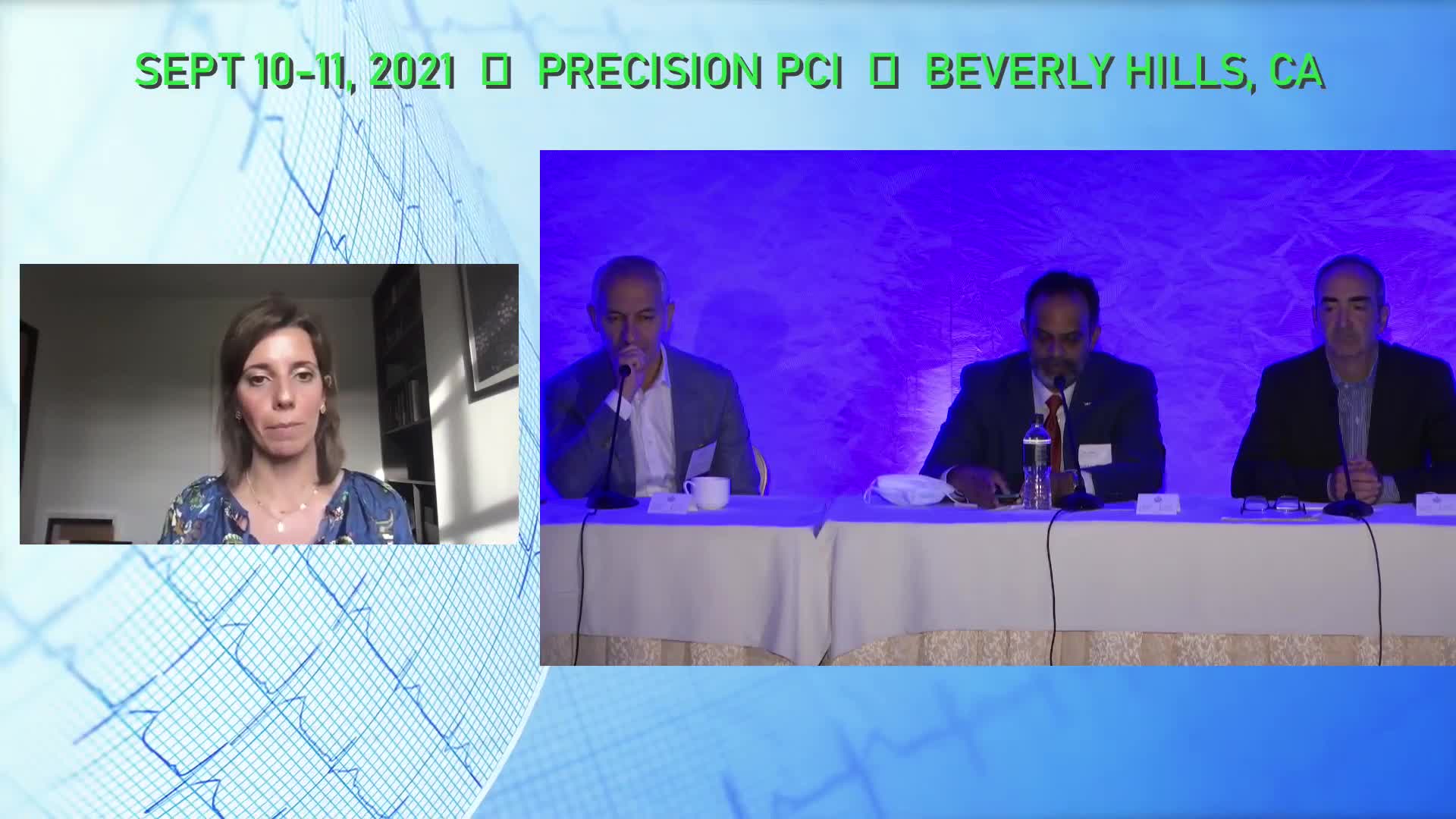
How Do You Define “Ischemia”? And is PCI Always the Answer?

Bruce Samuels presents Precision PCI
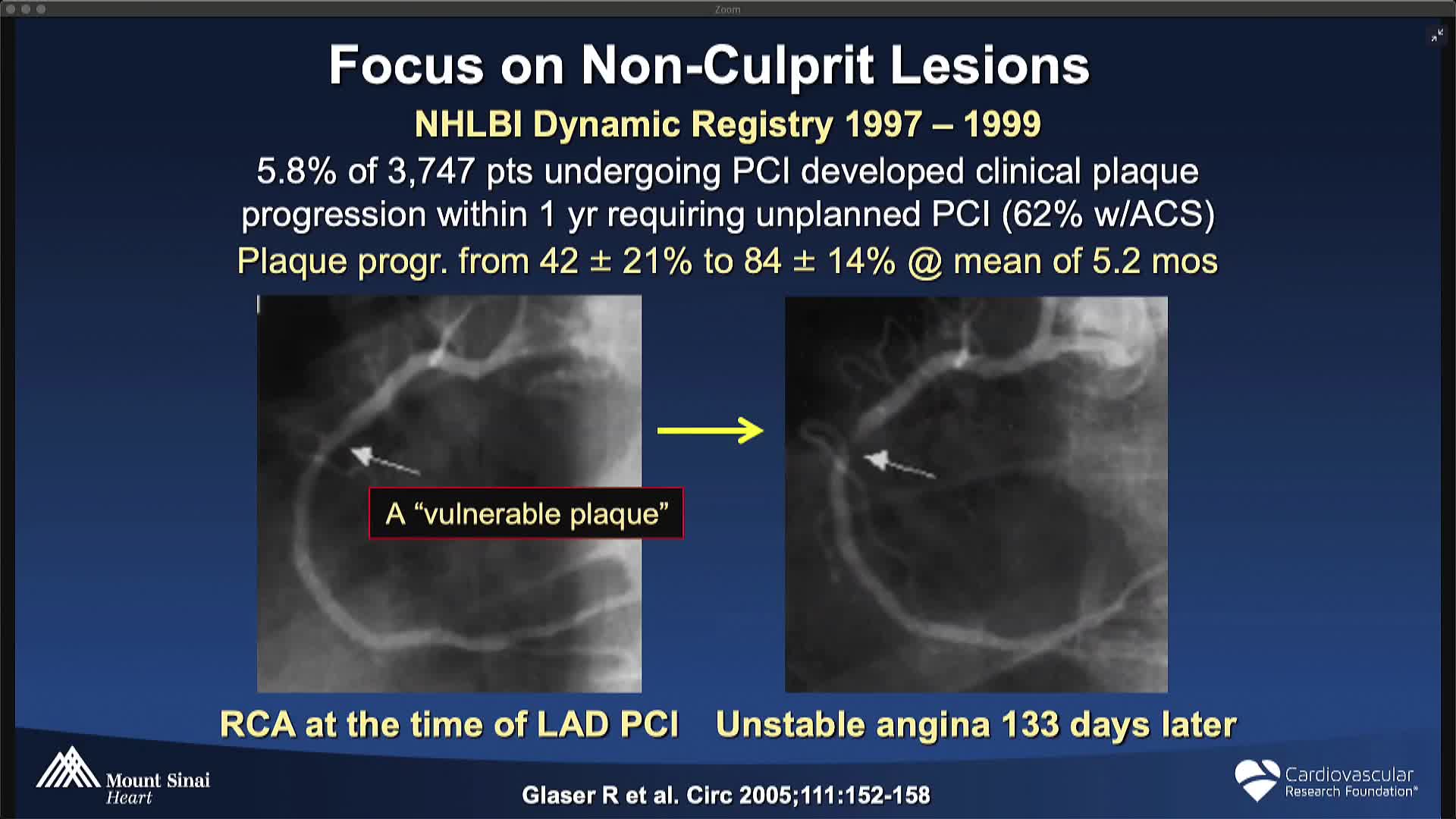
Keynote Lecture: Feeling Vulnerable – Should We Not Be Focusing on Tight Stenoses?

Bruce Samuels presents Precision PCI
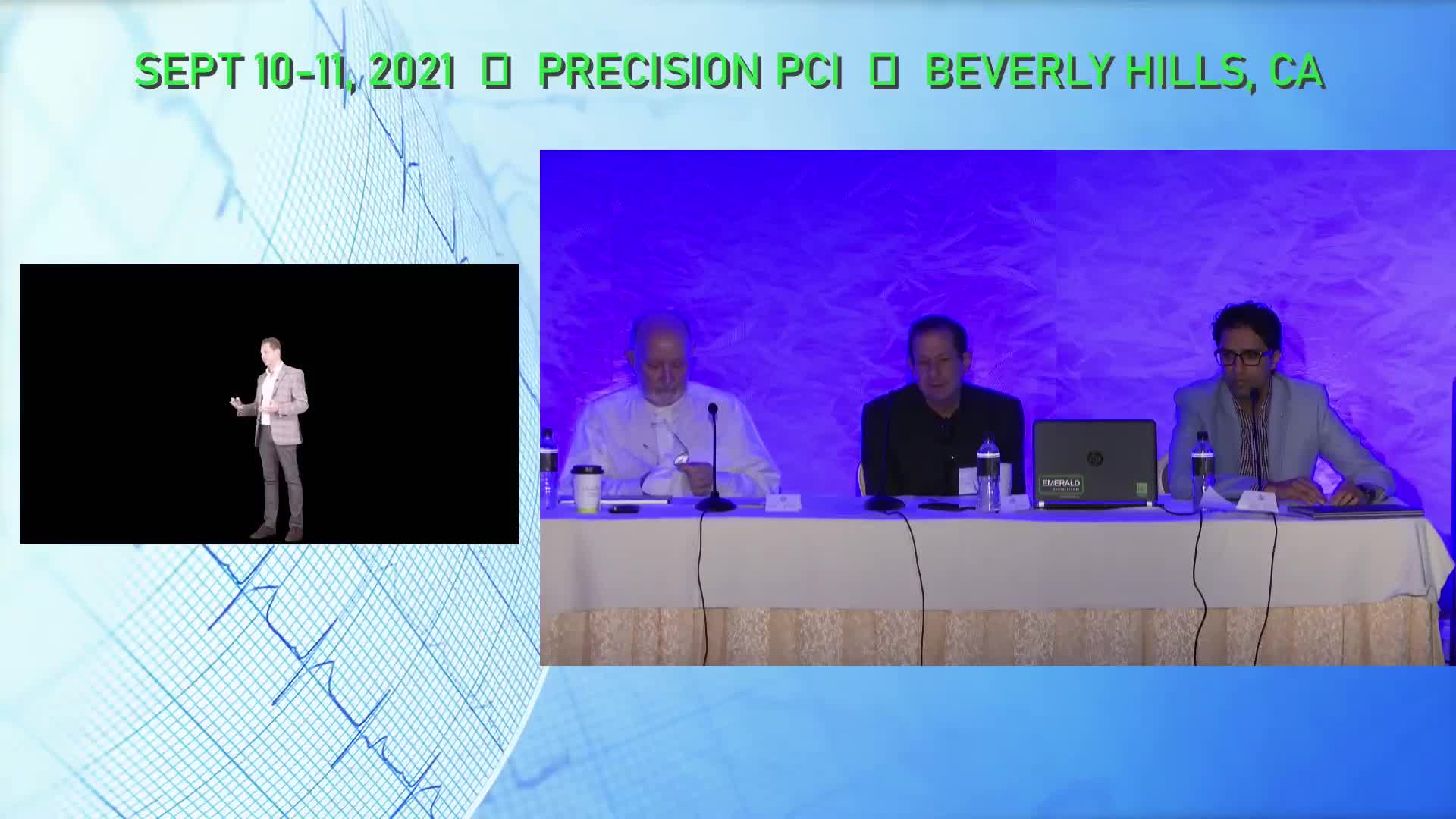
Planning and Optimizing with Physiology: DEFINE GPS to Show the Way

Bruce Samuels presents Precision PCI
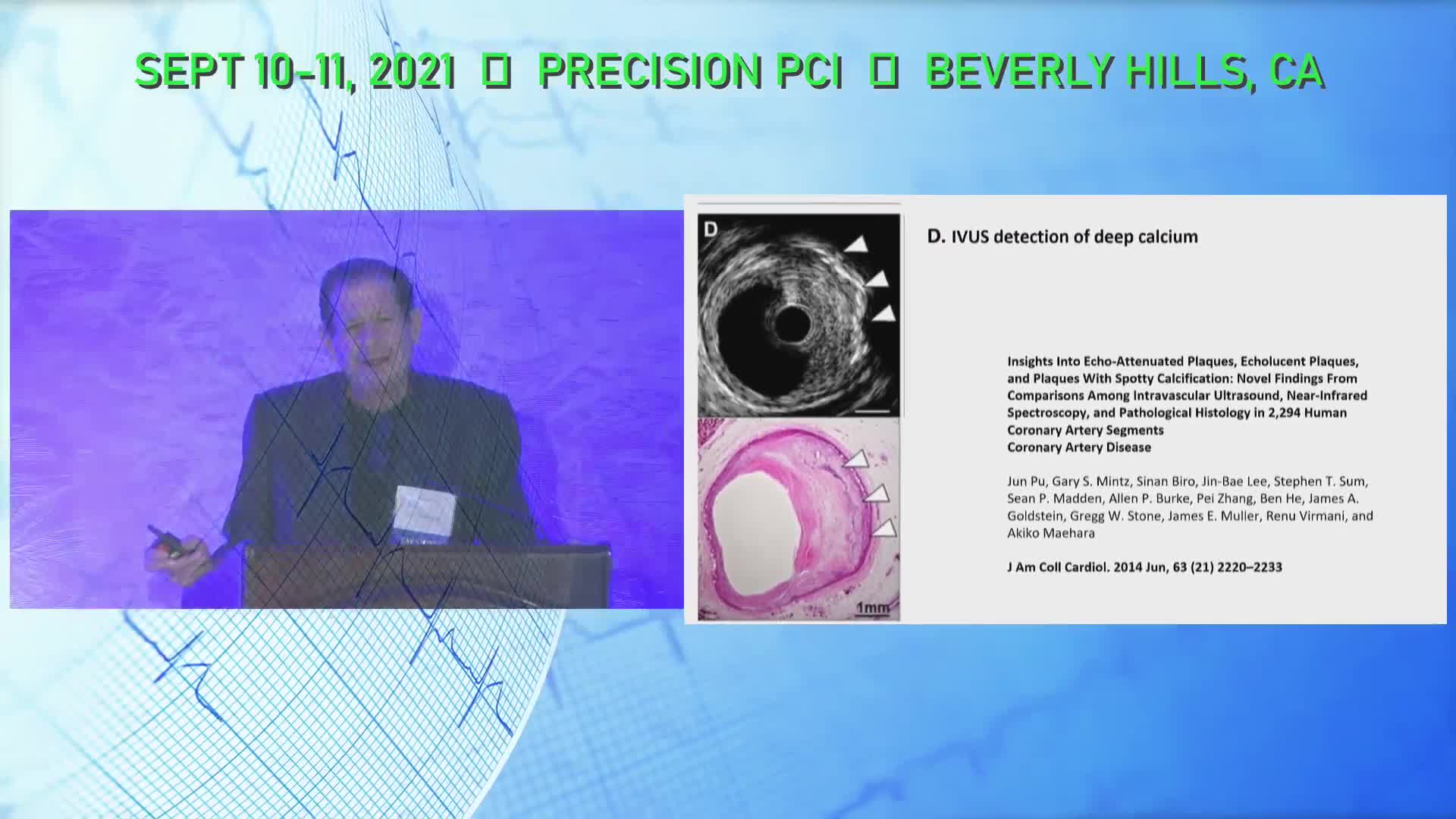
Between a Rock and a Hard Place: Imaging Guides Calcium Management

Bruce Samuels presents Precision PCI

Trouble Everywhere You Look: Physiology Guides Assessment of Multivessel Disease

Bruce Samuels presents Precision PCI

It’s Déjà Vu All Over Again: Imaging Guides Therapy of ISR

Bruce Samuels presents Precision PCI

Not Seeing Is Believing: Imaging Allows Zero (or Low) Contrast PCI in Renal Disease

Bruce Samuels presents Precision PCI
PRECISION PCI - 19th March 2021

Why Resting Physiology Assessment Works: Basics of Coronary Physiology

Bruce Samuels presents Precision PCI

Assessment of Serial Lesions/Diffuse Disease with Angiographic Co-Registration

Bruce Samuels presents Precision PCI

Latest and Greatest: Emerging Trials in the Use of Physiology to Guide PCI vs. Medical Therapy

Bruce Samuels presents Precision PCI
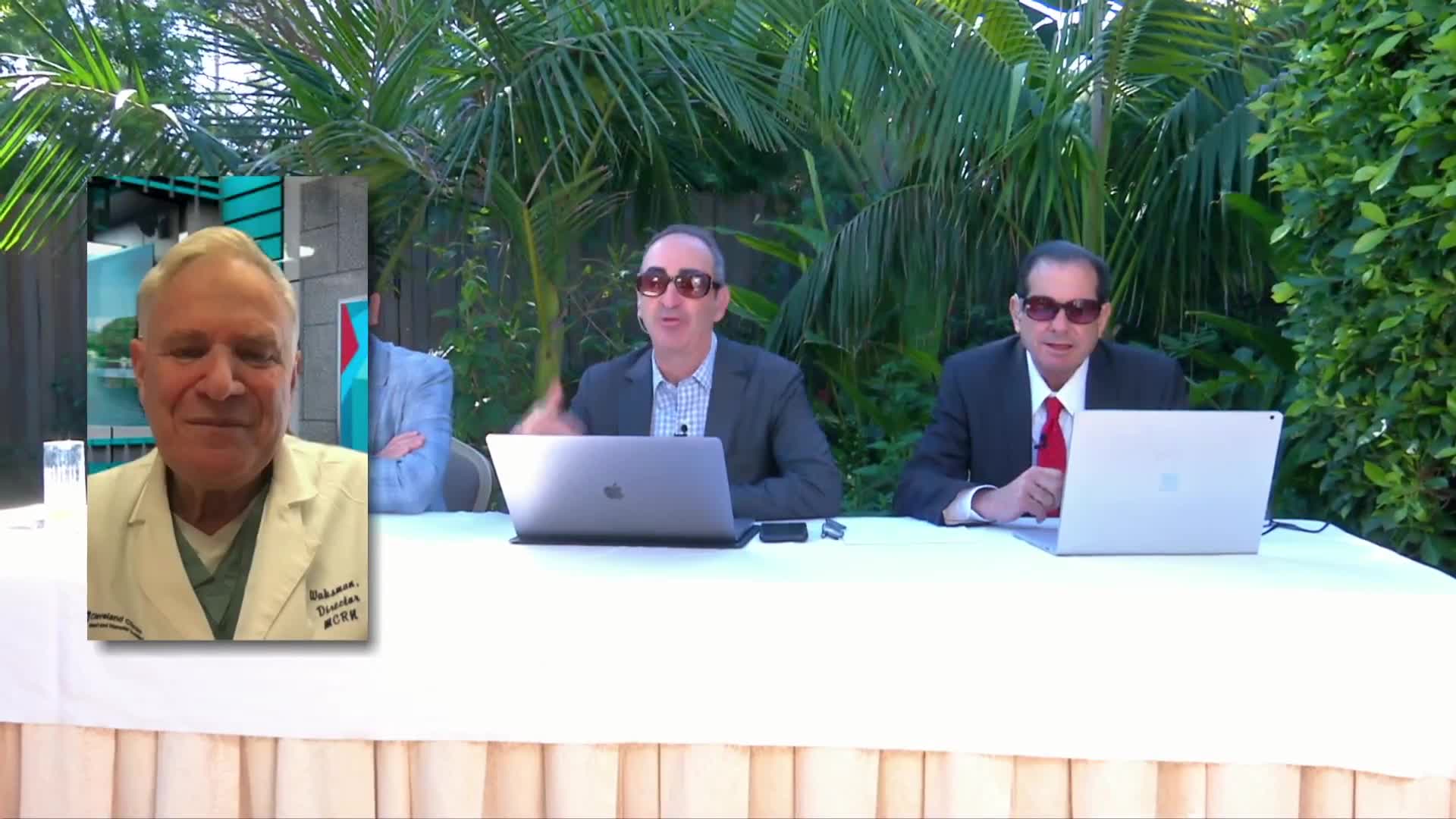
IVUS for All: Making the Case for Routine Use of IVUS in PCI

Bruce Samuels presents Precision PCI
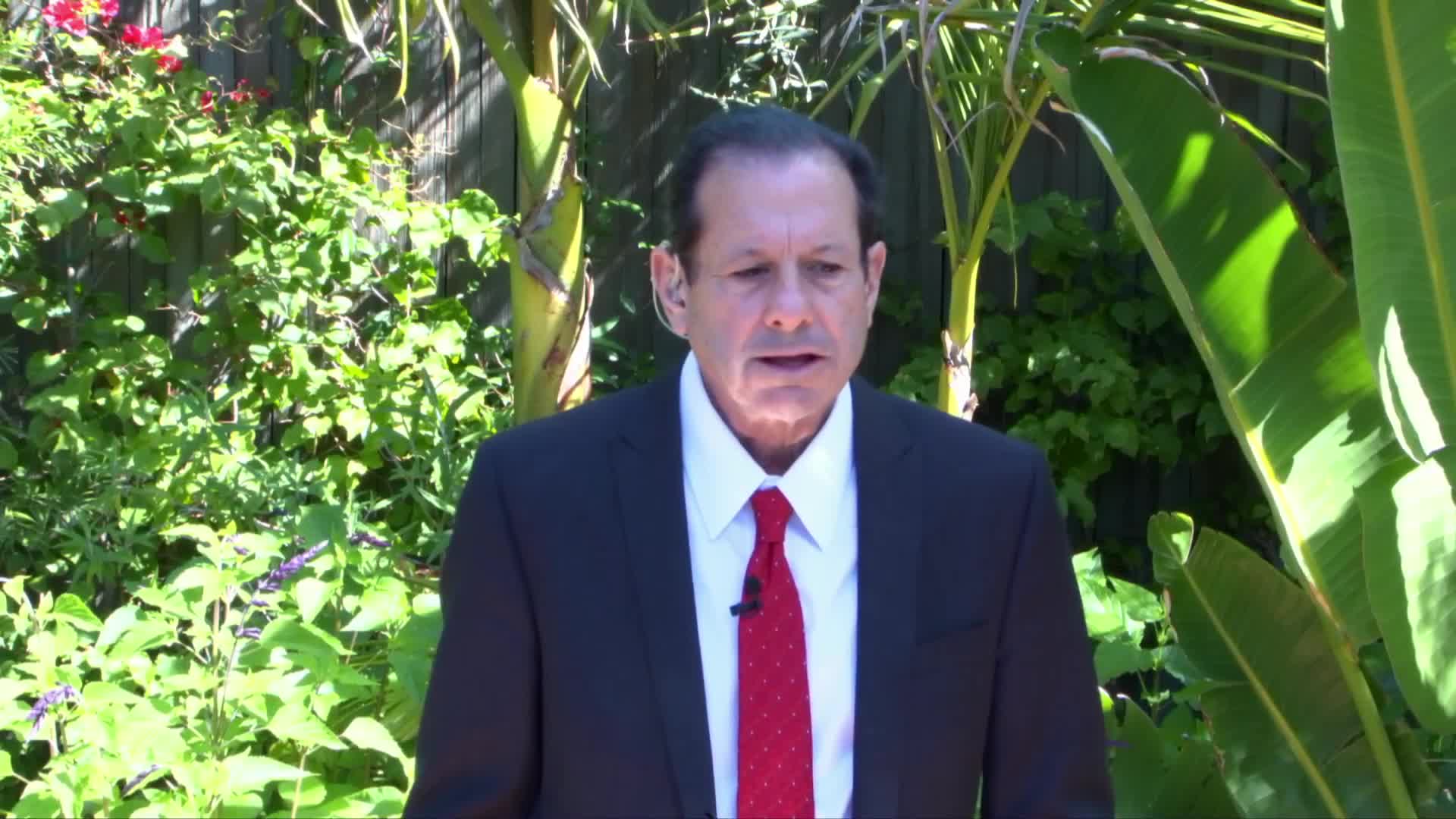
Left Main PCI: The Need for IVUS to Obtain Optimal Results

Bruce Samuels presents Precision PCI
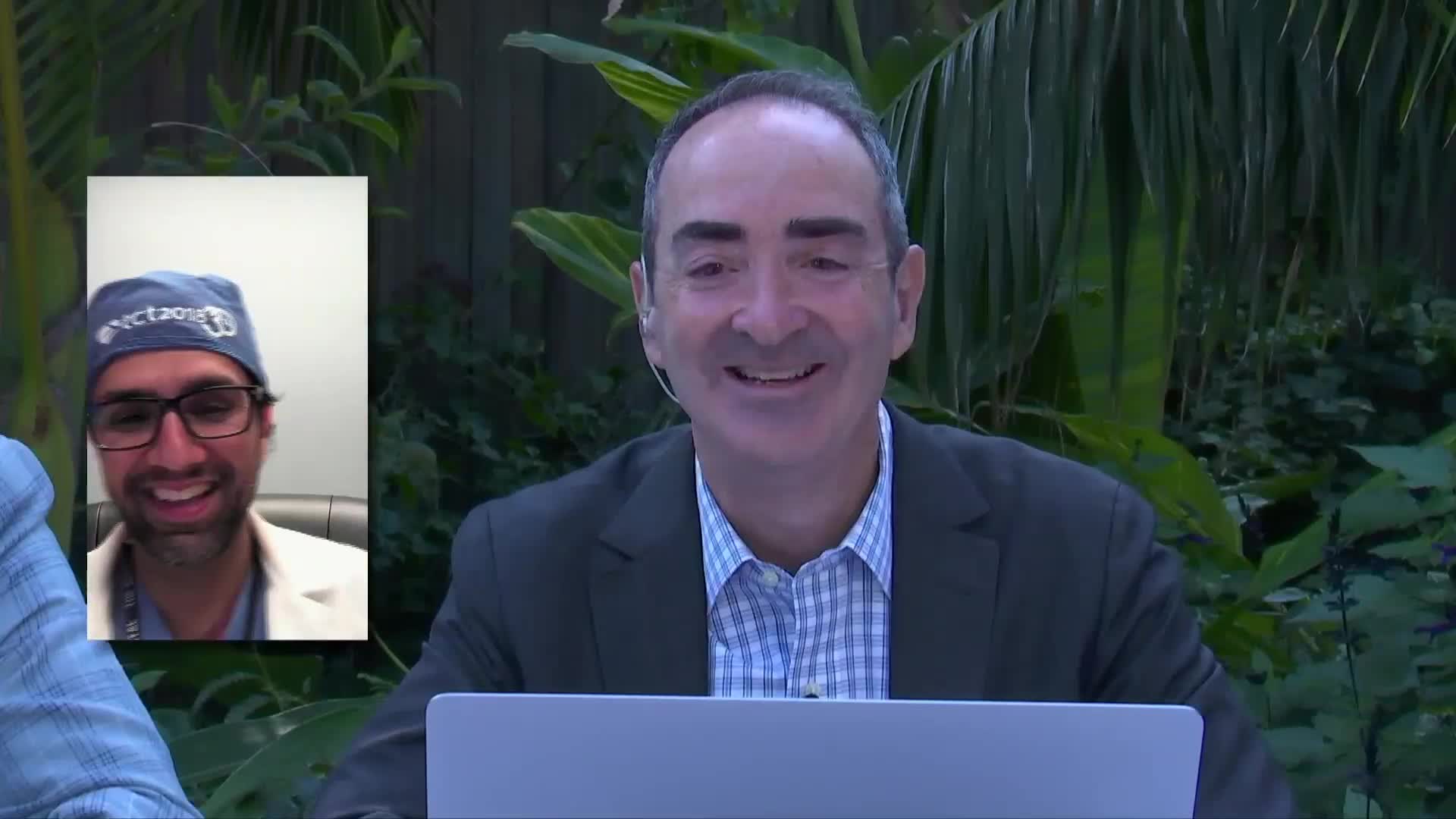
IVUS When You Need It Most: Calcium, Renal Failure and Other Concerns

Bruce Samuels presents Precision PCI
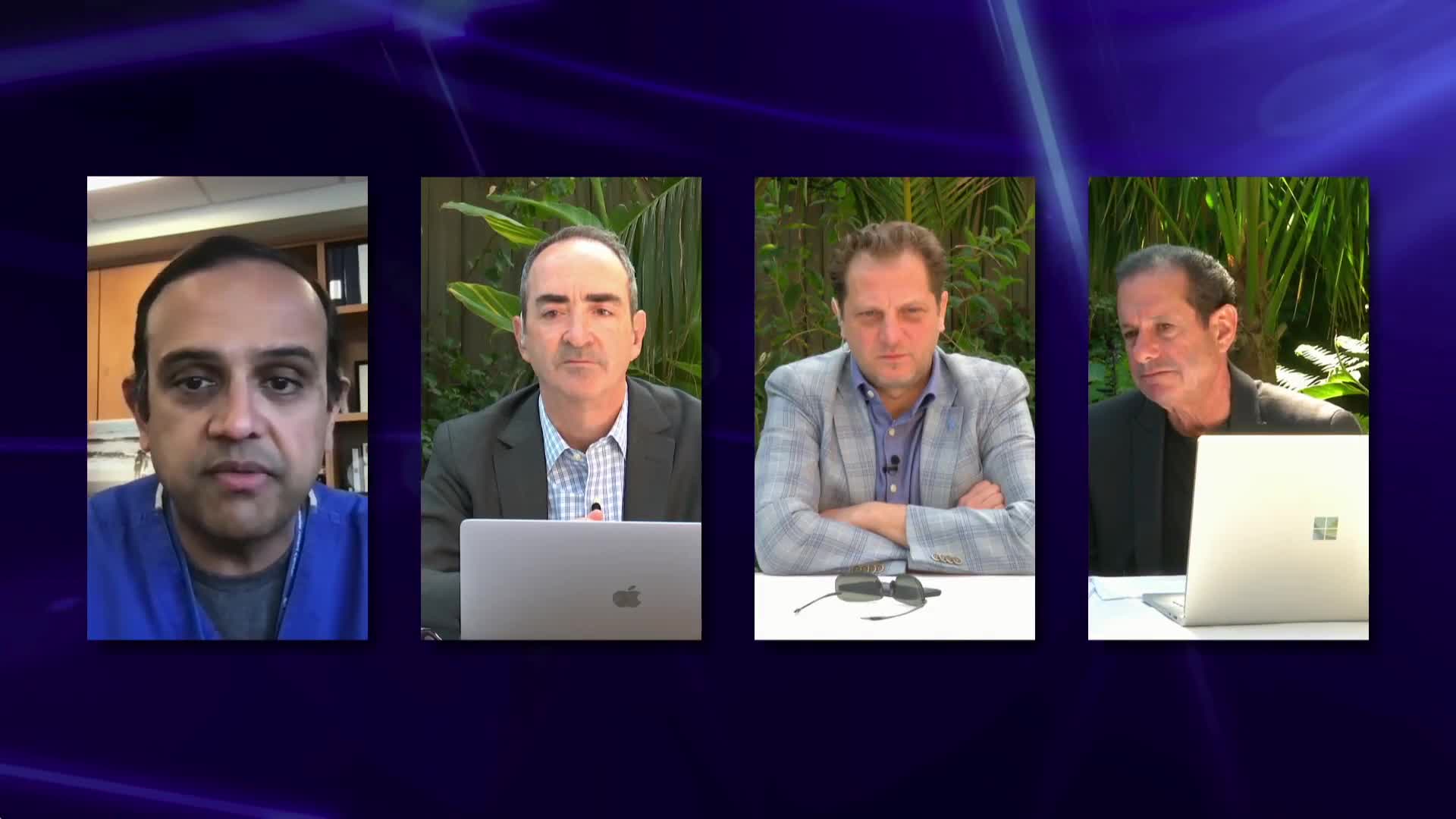
Physiology Assessment Without a Wire: Angio FFR and CT FFR


